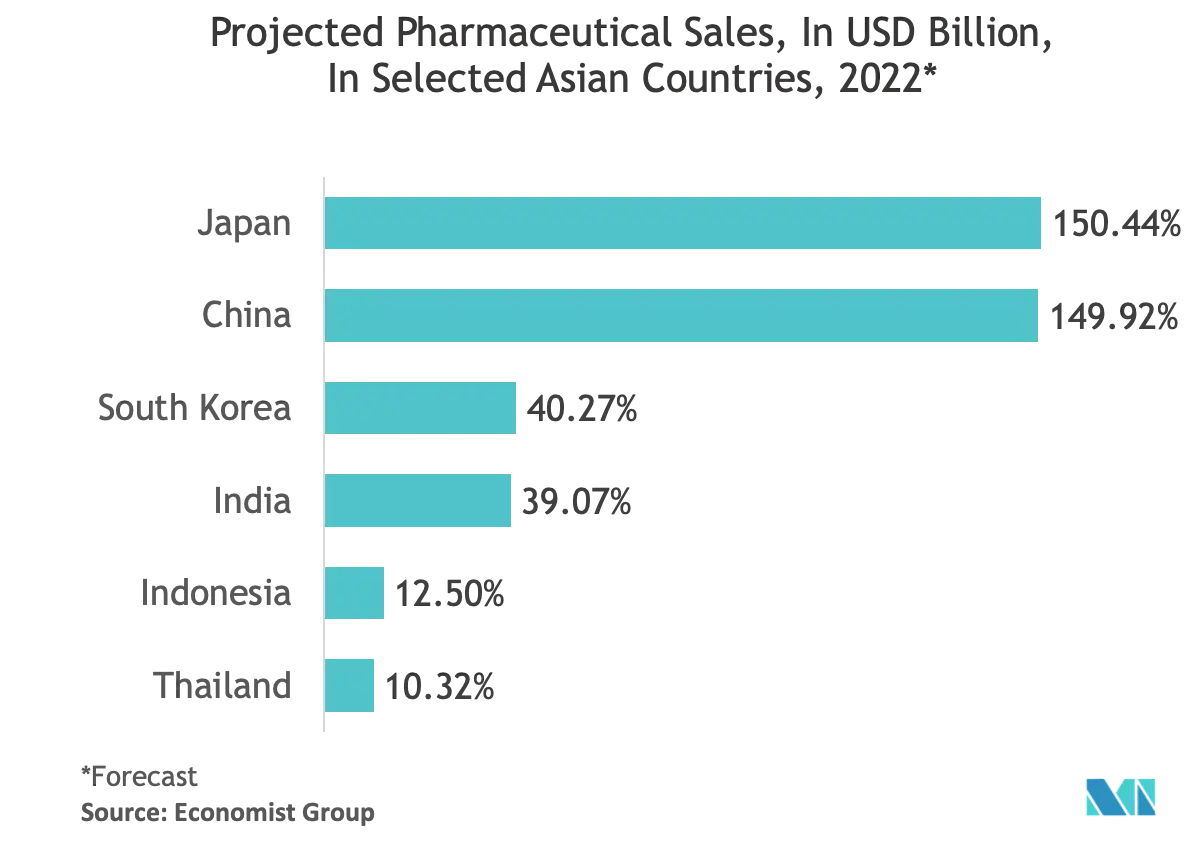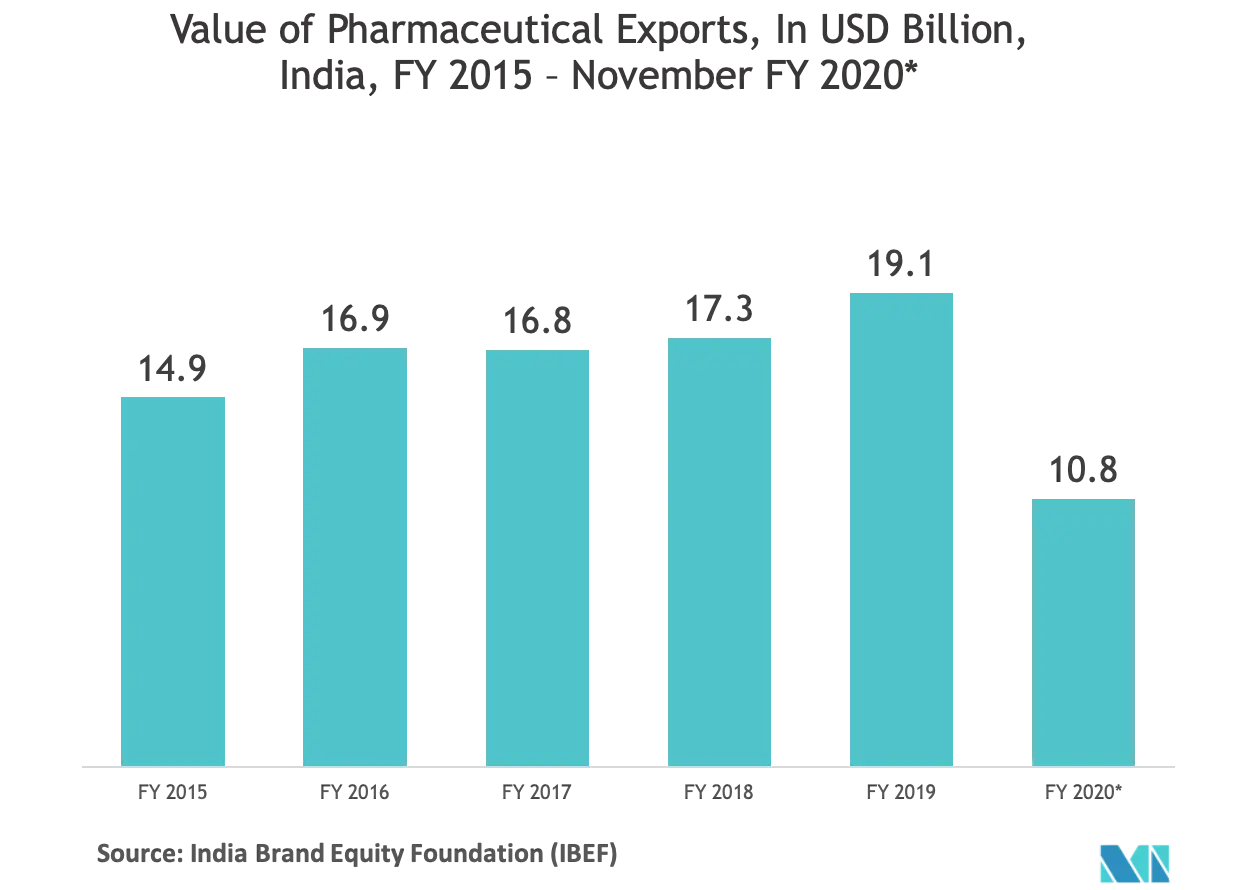Market Trends of Asia-Pacific Pharmaceutical Contract Manufacturing Organization Industry
This section covers the major market trends shaping the APAC Pharmaceutical Contract Manufacturing Organization Market according to our research experts:
Injectable Dose Formulations Holds Significant Market Share
- The pharmaceutical contract manufacturing market is estimated to experience an upward trend, with the rise in demand for injectable drugs, especially in cancer research.Owing to the robust demand for oncology and other high-potency drugs (such as antibody conjugates, steroids, and IV fluids that require quick onset of action), cytotoxics are expected to be the key growth drivers for the injectable dose formulation segment.
- Injectable drugs provide higher returns, as compared to other drug formulation types. Therefore, higher ROI, therapeutic efficiency, and rapid onset of action are expected to drive the growth of the injectable formulation segment.
- Robust growth rates may be expected from the number of promising late-stage clinical compounds in the pipeline for cancer therapy. Anti-cancer drugs represent a significant share of nearly 50% of the pipeline products.
- The majority of the biologic drug product formulations as well as fill and finish services are being outsourced to CMOs, while the big pharmaceutical companies focus on the discovery and development of drug substrates and products. Although other dosage formulation manufacturing involves lesser capital investment and operating costs, the profit margins are higher for sterile injectable dose formulations.

India Occupies Significant Market Share
- With the advent of multinational pharmaceutical organizations and their rapidly growing presence in India, the concept of contract manufacturing has steadily evolved and quickly adapted to encompass services, such as formulation development, basic manufacturing of medicinal products, stability studies, and various stages of clinical trials.
- India has a far superior advantage, over many nations, in the basic manufacturing of medical drugs and products due to resources, such as large manpower, knowledgeable workforce, and WHO-GMP approved production principles.
- Scale-up of drug synthesis and late clinical trials have become a profitable protocol in this region. Along with it, DTAB (Drug Technical Advisory Board) has agreed to grant wavier to late stage (Phase III) studies of certain drugs in India, which are from the regulated markets of Europe and the United States. This incentive step translates into enormous cost savings for pharmaceutical companies, thereby increasing their focus on India.
- The COVID -19 outbreak is expected to hit India’s pharmaceutical sector as well; in fact, it has already started. Indian drug manufacturers are dependent on China for sourcing their drug ingredients or active pharmaceutical ingredients (API) to a large extent. The prices of key ingredients for the manufacturing of drugs are rising on account of the virus outbreak. According to data available with the Pharmaceutical Export Promotion Council (Pharmexcil), the cost of key ingredients has gone up by 50- 60% already.
- Latest data compiled by India’s drug regulatory authority revealed that 57 APIs required for crucial antibiotics, vitamins, and hormones or steroids may go out of stock, in case of a prolonged lockdown in China. This may, in turn, have a significant effect on the pharmaceutical manufacturing industry.

